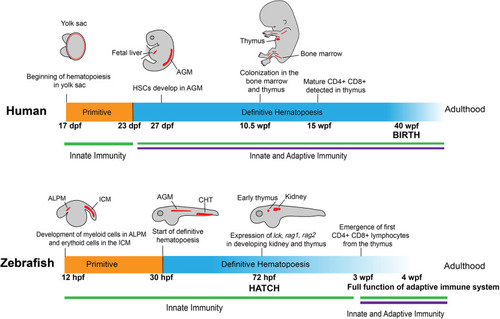- Title
-
Tipping the Scales With Zebrafish to Understand Adaptive Tumor Immunity
- Authors
- Miao, K.Z., Kim, G.Y., Meara, G.K., Qin, X., Feng, H.
- Source
- Full text @ Front Cell Dev Biol
|
Development of human and zebrafish immune systems. The development of the immune system starts with hematopoiesis at ∼17 dpf in humans and 12 hpf in the zebrafish, with myeloid and erythroid cells arising in the ALPM and ICM, respectively ( |

